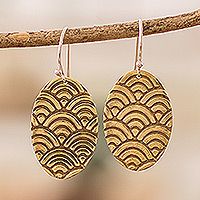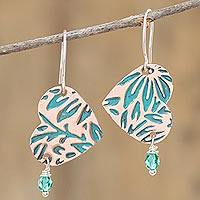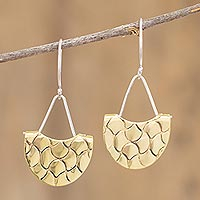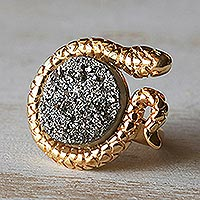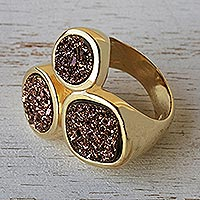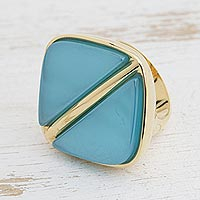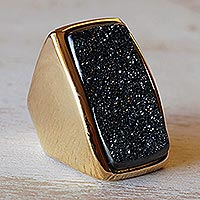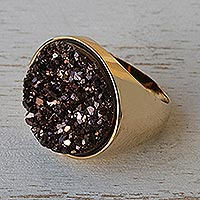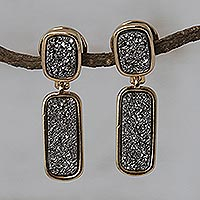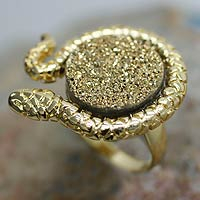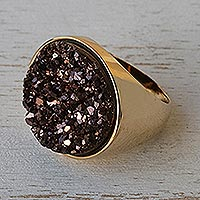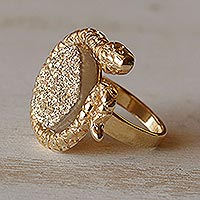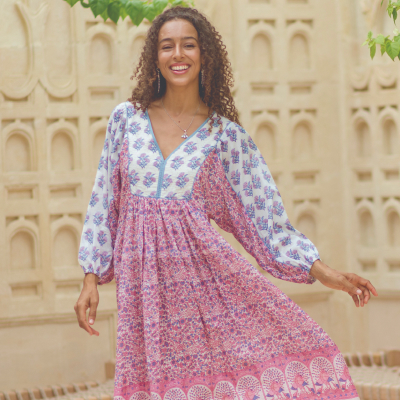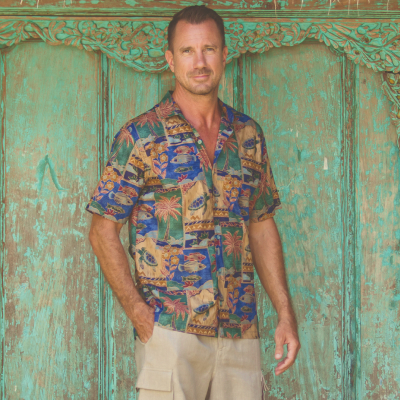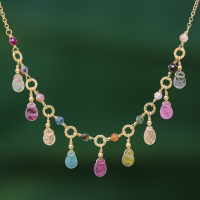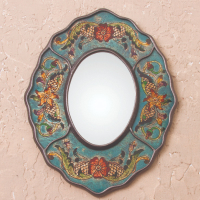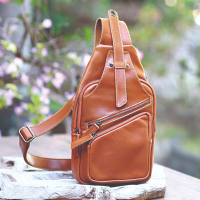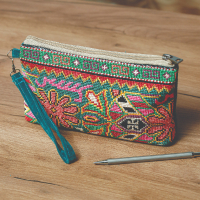

What makes a women’s bracelet eco-friendly?
Artisans the world over utilize the natural materials at their disposal to create beautiful, sustainable jewelry. Wood, bamboo and dried gourds. Coconut shells, rattan and terra-cotta. Even natural grasses lend themselves to a jeweler's creativity while art glass beads and pendants can be made from discarded bottles. Some artisans reclaim precious silver from photographic negatives. Colorful magazine pages can become tightly-rolled beads protected by a coat of varnish. Always creative, artists craft their bracelets out of innovative, eco-conscious materials.


How do I know if my bracelet is handmade?
Handmade women's bracelets each have their own unique characteristics. Color, texture, size and design all vary. Often, the technique alone will tell you, for example, hand-knotted, braided or woven bracelets. Leather bracelets with cutout motifs or embossing are usually crafted by hand.Thai jewelry by Karen silversmiths shows hand-stamped geometric or floral motifs and beads are usually made of fine silver, which is more malleable than sterling. Similarly, filigree jewelry is a meticulous handcrafted process. Most bracelets with natural, sustainable or recycled materials are handmade. Even some of the most sophisticated and modern gold and silver may be signed by the artist who made it.The most common indicator that a bracelet is handmade is the detailed and intricate design. Novica artisans demonstrate their techniques in the many videos on www.novica.com youll find the links on their product descriptions and also on the artisan bio page.


What bracelet-making techniques have been passed down through generations?
Traditional bracelet-making techniques have been passed down over generations around the world. Women's bracelets in gold and silver are usually crafted with the lost wax technique. The image is sculpted in wax and enveloped in a mold materia. As molten gold or silver is poured into the mold, the wax image melts and the metal takes its place. However coiling fine strands of metal results in Andean filigree jewelry. Balinese artistry applies polished spirals and tendrils as well as tiny globes known as jawan to sleek silver jewelry. And a few contemporary artisans even weave or crochet the slender silver strands.Jade was highly prized by the Maya and still has an important place in modern Guatemalan jewelry. Amber from the rich mines in southern Mexico adorns the women's bracelets, necklaces, and earrings of the area. Macrame and beading are popular everywhere for boho style. And West Africas handmade beadwork is renowned the world over.


Do any women’s bracelets have particular cultural significance?
women's bracelets carried immense cultural significance in ancient times and they still do. In Perus pre-Hispanic societies, gold represented the sun, and jewelry indicated social status and identity, as it also did among the Maya of Mexico and Central America. In India, bangles or kangans showed a woman was married and are a part of the 16 adornments customarily worn by a Hindu bride. Traditional West African beads are a sign of cultural identity. Each one has a meaning and tells a story.Today, women's bracelets are still culturally significant. In India, jewelry often depicts religious symbols and meditative mantras. Balinese bracelets may also depict dragons, thought to be the protectors of the gods, or the Hindu Barong deity, also a protection symbol. Motifs stamped into Karen hill tribe silver encourage living in harmony with nature. The hand-knotted bracelets of Guatemala symbolize friendship but evolved from a silent protest for loved ones missing during the country's armed conflict. Today, friends each tie a bracelet on the others arm and make a wish. The bracelet is worn until it wears out and falls off so the wish will come true.


What are the most popular materials to make women’s bracelets?
Silver, gold, brass and copper have been popular for thousands of years and are often set with colorful gemstones. Artisans in different regions of the world take advantage of unique local resources, such as Brazilian golden grass, leather and coconut shell from Thailand, and carved bone jewelry from Bali. Intricate openwork carving, known as jali, can be seen in bangles from India. West Africa has a long tradition of beadwork, with beautiful beads made from recycled glass and even plastic becoming popular in recent years.


What materials are used to make men’s rings?
Global artisans use all sorts of materials in their handcrafted jewelry for men. In the Andes, sterling silver, leather, and combinations of natural stones are frequently used. In Bali, silver, gold, bone, wood, brass, and stainless copper adorn handmade jewelry. In West Africa, men's jewelry honors the cow, where bone and horns are incorporated into unique pieces.


Are there any earring designs or symbols that have a particular meaning?
Absolutely! Jewelry is an art form that allows makers to express their individuality and cultural influences, and certain designs are used to represent important symbols. For example, Central American artisans incorporate traditional figures, glyphs, and pre-Hispanic folklore. In Mexico, the famous work of artists Angel Ortiz, Maria Belen Nilson, and Rosa Rojo highlight the beauty of Aztec, Mayan and Teotihuacan civilizations. In Peru, powerful symbols, like the Andean chakana, are used to represent humanitys union with the cosmos. Indian artists are extremely tied to their faith and spirituality. Earring designs include chakra gemstones, motifs of Lord Ganesha, and other spiritual imagery. In Bali, the Om symbol is prevalent, as well as the mythological panther-like Barong image, which is seen as a protector spirit. Designs pulled from the natural world, like animal figures, feathers, plants, as well as stones, are used in almost every culture, which then infuses them with their own particular meanings.


Are there any eco-friendly women’s earrings?
Yes! We offer a wide selection of earrings that are made from eco-friendly materials. Cow bone, water buffalo horn, fabric, recycled paper, wood, palm leaf and coconut shells, just to name a few. Product descriptions always list materials used, so be sure to read about each product to discover how artisans are working to ensure sustainability and environmental consciousness.


What materials are best for women’s earrings?
There is no best when it comes to handmade earrings. However, certain materials lend themselves well to jewelry. Silver and gold, for example, are frequently used to make earrings because of their luster and shine. Each region puts its own unique touch on the art of earring-making. Most use some combination of silver, gold, gemstones, wooden or glass beads, and bones. Some regions, like West Africa, have found ways to introduce up-cycling into the jewelry-making process. Recycled plastic and paper beads, as well as coconut shells are commonly integrated into beautiful works of earring art. Whatever materials used, quality and safety are always our top priorities. Each pair of earrings is tested to ensure its safety. If you do have sensitive skin, you may consider rhodium plated earrings, as rhodium is completely hypoallergenic. You can always find all relevant information about materials in the product description.


What are the most popular materials to make mens bracelets?
Traditional artisans handcraft jewelry using the techniques and materials of their ancestors. In Indonesia, the most common mens bracelet is made from Akar Baharnatural, or black, coral. In the Andes, sterling silver, leather, waxed cotton threads, or natural stones adorn handmade jewelry. In Central America, the list includes: gold, brass, cord, wood, or glass. West Africa also makes use of these materials, plus wooden beads. And India incorporates gemstones into its rich history of jewelry.


How do I know if my bracelet is handmade?
Excellent question! There is no simple test that can tell you whether an artisan hand-crafted your jewelry or not. No easy way to know if an item is handmade or factory-produced. But there are details that you can look out for, and hopefully a discerning eye will guide you right. First, look at materials. If a bracelet is made of leather with embossed detailing, or sterling silver with intricate carvings or stone settings, you are entering the realm of the handmade. If a bracelet is made from bone, or makes use of complicated beadwork, if there is evidence of welding or carving, then you can feel good about your purchase. Any true artisan will tell you: no two pieces of jewelry will come out identical if they are made by hand. Beware of sameness. Celebrate the idiosyncrasies of the artists hand and help preserve the techniques and traditions of the past.


Do any men’s bracelets have particular cultural significance?
Since time immemorial, jewelry has been used as a personal ornament, religious signification, or tastes in fashion. Today's handcrafted artisan jewelry is no different. In West Africa, leather is prized by certain tribes and connotes a connection to culture. In Indonesia, black coral, or Akar Bahar, is believed to protect the wearer from witchcraft and evil, and so it is used in many jewelry items for men. In Peru, leaders adorned themselves with garments that were exclusive to their rank, so men's jewelry not only indicated their function, but was also steeped in iconography, religious code, and emblems of power and prestige. In India, artisan jewelry incorporates the motifs of Om, a spiritual symbol signifying the essence of consciousness, and Lord Ganesha, the god of beginnings who is honored at the start of rites and ceremonies. Today, artisans working in these classical styles preserve the heritage that was passed down to them over time.


What are the meanings behind some of the popular stones used for mens rings?
To understand the significance of traditional, handcrafted men's rings, we need to talk about stones. All over the world, stones reveal deep cultural connections to the land, belief systems, and aspirations. In Peru, artisan jewelry makes use of chrysocolla (also known as "Peruvian turquoise"), which was used by the Incas as an inlay in their goldwork. They believed it calmed their emotions and strengthened their immune defenses because it had medicinal powers. In Bali, kecubung (Amethyst) is incorporated into handmade rings because it brings peace to those who wear it. Kalimaya (Opal) is believed to stabilize the mental well-being of the wearer. In Guatemala, jade is the stone of choice, as the Mayans attributed special powers to it, believing it symbolized life, fertility, and power. In India, onyx is a stone of vigor and stamina, which strengthens self-confidence, banishes grief, and stimulates wise decision-making. Lapis lazuli relieves anger and negative thoughts and eases frustrations. Tigers eye stone aids harmony and balance and helps release fear and anxiety. The list of unique stones is as long as the master craftspeople who use them in their traditional jewelry.


What have men’s rings represented throughout history?
From wedding rings to religious symbols, men's rings have carried tremendous significance throughout history. In West Africa, rings were originally used to represent God's unmatched power and the authority of mankind on earth. In India, handcrafted rings have been used to symbolize everything from devotion and fidelity to eternity and belief in a deity. Today, like in many cultures, Indian rings represent love, engagement and marriage. Pre-Hispanic cultures in Central America and South America used handmade jewelry to denote social position, rank, as well as personal adornment. Metal, bone, shell, and stoneparticularly jadewere chosen for beauty and durability. Even the choice of metal has meaning in particular cultures. The Incas, for example, believed that gold was a sacred metal sent by the sun god, Inti, and all mines belonged to the emperor, who protected his metals with great zeal.


What mens ring motifs have special cultural significance?
Men have worn rings since ancient times as a personal ornament, a sign of social position, official rank, or a symbol of religious beliefs. Handmade jewelry may reflect changes in fashion, but it remains rooted in the history and culture of a people and place. Each unique ring reveals the artistic sensibility of its maker, yet certain symbols and motifs appear frequently. In India, the Om motif has special cultural significance as a sacred spiritual symbol. It signifies ultimate reality, or consciousness. In Bali, the Om Kara, or Ongkara, represents five elements: wind, fire, ether, water, air, and earth, which correspond to different aspects of the human body. Religion and mythology are also manifest in traditional jewelry. Lord Ganesha, one of the most worshipped deities in the Hindu pantheon, is revered as the remover of obstacles, the patron of arts and sciences, and the god of intellect and wisdom. In Bali, Barong is a lion-like mythical creature that symbolizes victory and spiritual protection. These symbols and others can be found on handmade rings from around the world and are ways of honoring history, culture, and spirituality.


How do I know if my necklace is handmade?
Handmade necklaces are incomparable works of wearable art. Each one is unique in shape, color, size and design. Artisans from across the globe offer their own distinctive style of craftsmanship. In India, the vibrant colored gemstones have become a signature fashion statement. Balinese jewelry is characterized by ornate sterling tendrils set with tiny silver spheres. In Brazil, womens necklaces are often sleek and contemporary, with gemstones chosen for their particular energies. Many jewelry designs from Bali and Central America feature hand-knotted macram, such as that used in Guatemalas popular friendship bracelets. Handmade finishes may show variations in metal patterns. No two natural gemstones share the same characteristics. Each necklace holds its own individualistic sense of beauty, making it evident that it was crafted by hand. Some even bear the artisans signature.


What makes a necklace eco-friendly?
Sustainable necklaces are designed with reusable materials, and each culture makes use of the objects and materials most readily at hand. For example, many Andean, Central American and Thai artists use repurposed wood. West African artisans use recycled paper, and beads of recycled glass or plastic. In Thailand, Mexico and Bali, coconut shells are often used. Indian artists sometimes repurpose silk from saris. And Brazilian artists collect discarded zippers and soda pop-tops to crochet into stunning, eco-friendly designs.


What are the classic techniques for making women’s necklaces?
Many artisans the world over work in lost wax. They sculpt the image they want in wax, encase it in a mold, and pour molten silver or gold into it. The wax melts and flows out, leaving only the precious metal. However some artisans in Peru specialize in handmade silver and gold filigree, and some Balinese necklaces feature chains that are handwoven from slender metal strands. Karen hill tribe artisans in Thailand often use manual tools to stamp decorative motifs on fine silver. Other techniques include macram, beaded or gemstone strands, hammered metals, and carved wood or bone.


What are the most common materials for making women’s necklaces?
Precious metals and natural gemstones are the most popular materials for women's necklaces. Silver, gold and brass all provide durability as well as beauty. Artisans also utilize local materials that can include coconut shells, bamboo, bright African print fabrics, ceramic beads, natural amber, carved bone and bull horn. Both Peru and Mexico have rich silver mines and silver is used for traditional jewelry as well as contemporary designs.


What is the best way to wear women’s necklaces?
Women's necklaces are versatile and come in many styles and lengths. They can be layered or worn alone as a statement piece. Many designs go with everything from jeans to office wear or an evening out on the town. The best thing about jewelry is that its a customizable form of expression that provides a sense of luxury and individuality.


What are the signs of a well-made necklace?
When assessing the workmanship of a necklace, its helpful to pay attention to certain characteristics. For example, quality necklaces are balanced designs that rest comfortably around the neck. Clasps are secure and work well, and gemstones and beads are properly set. The precious metals should be nicely finished, and beads should not be too tightly strung. Well-made necklaces reflect excellent craftsmanship and attractive materials.


Are there specific cultural symbols used in womens necklaces?
Each culture celebrates its rich jewelry-making history through specific symbols and styles. For example, traditional West African beads, which adorn many necklaces from the region, each have a story and a specific occasion when they are worn. Others may feature the Ghanian adinkra symbols, which convey popular wisdom. In ancient Andean civilizations, the leaders apparel and jewelry showed their rank and also incorporated religious symbols. Similarly, necklaces from Bali often depict deities from the Hindu pantheon. In India, a womans jewelry is linked to her status in society and may depict Hindu gods as well as mantra symbols such as the omkara, the root of all sounds and the emblem of the Most High. Angel necklaces and harmony ball necklaces are often worn by pregnant women in Bali and in Mexico. The pendant makes a delicate bell sound, thought to soothe the mother and the baby she is carrying. Some believe it summons a guardian angel, thus making it a symbol of loving protection.


Were men’s bracelets worn throughout history?
More than a mere fashion statement, men's jewelry, including bracelets, have been worn throughout history to communicate cultural, religious, and social beliefs. Prehistoric man adorned his wrists with bones and shells to ward off evil spirits. Wealthy men wore bracelets made of gold and silver to display their power and status. Bracelets evolved over time from good luck charms to status symbols to modern style accessories. All the while, they pick up and preserve meaning from the past. In Peru, gold and silver bracelets were meant to complement each other symbolically. Gold represented the sun, the day, and the masculine. Silver represented the moon, the night, and the feminine. These two bright, powerful metals held one another in balance. In Central America, natural materials decorated men's jewelry to signify a connection to place. Metals, bone, shells, bird feathers (especially the beautiful quetzal bird), and carved stones (particularly jade for its power of fertility and life) protected and decorated the wearer.


What makes a necklace eco-friendly?
Many traditional artisans employ the handcrafted techniques of their ancestors, which favored a slow, methodical approach in a small workshop, as opposed to mass production. Today, they preserve these methodologies while intentionally distinguishing their approaches from those of large factories. Respect for the environment, and for animal and human life drive the artwork itself. Natural materials are often a sign that a product is eco-friendly. Additionally, many artisans look for ways to reuse or recycle in their artwork. Some choose to repurpose old wood or fabric. Some recycle glass beads or up-cycle plastic and discarded paper. Others follow practices that conserve resources, like water and energy, and are mindful of the pollutants they release into the environment. Shopping from organizations that promote eco-friendly products is the best way to ensure that you are receiving a unique item that does not damage the world through its making.


Are there specific cultural symbols used in mens necklaces?
Handcrafted mens jewelry captures our undying passion for symbols and meaning through a variety of designs, emblems, and carvings. In ancient Peru, men wore necklaces adorned with pendants of human, animal, and divine characters. A common symbol that has withstood the test of time is the Andean Chakana, or the staggered cross, that attests to the relationship between humankind and the cosmos. In Bali, mens jewelry integrated the cross, the sign of freedom, and Ongkara symbol for oneness and spirituality. In Central America, carved glyphs were commonly used. Animal figures and bird feathers (like the quetzal and macaw) had special significance, as did natural stones. In India, Om and Ganesha symbols are used for protection, prosperity and purity. In West Africa, Gye nyame, symbolizing Gods deep power and infinite knowledge, is still used on necklaces.


On which finger or hand should mens rings be worn?
There is no right way to wear mens rings. Right hand, left hand, ring finger or thumb, where you place your ring is as much a matter of preference and comfort as it is style. Besides the common ring finger to signify love or marriage, other fingers of note are the index finger, which symbolizes power, leadership, and authority in some cultures, and the thumb, which can signify wealth. Wherever you choose to don it, a handmade ring should be as unique as the man who wears it.


What are the signs of a well-made necklace?
Like many things, when it comes to great craftsmanship, the evidence is in the details. We asked artisans what they look for in a good necklace, and heres what they told us. Keep your eye out for the smooth functioning of the lock. It should clasp easily and cleanly. Examine the weldings of the chain joints, and pay attention to the surface of the jewelry. Is it finished in high polish? Are handcrafted details evident? Are engravings handmade? Artisans also look for uniqueness in design, integrity of workmanship, and high-quality materials. Necklaces should be free from dents, and beads should stay fastened in place. No chips in the gemstones, no cuts in the bezel, and no obvious glue marks of any kind. While these standards may seem high, we believe that artisan jewelry should aim for the stars.


What are the most common materials for making mens necklaces?
The materials that comprise handmade artisan necklaces are as varied as the makers themselves. Craftspeople all over the world use metals, like sterling silver, gold, copper and brass, to perfect their designs. Cotton or nylon cord and leather are also common materials used in traditional mens jewelry. Wooden beads, cow bones, coconut shells, bamboo, and gemstones all adorn mens necklaces from across the globe.


How should men’s bracelets be styled?
Unique, stylish, and handcrafted. These are the guiding principles of wearing men's jewelry with confidence. There are no rules when it comes to men's bracelets. You can wear simple leather, or a combination of metals. You can go understated or bold. Colorful or subdued. However you choose to display your handmade jewelry, what matters most is that you discover pieces that attest to your own originality.


What men’s bracelet-making techniques have been passed down through generations?
Techniques that rely on handmade craftsmanship honor the cultures and regions from which they come. In Bali, repouss, or the art of silver filigree, is still preserved by artisans today. In Central America, jewelry-makers work with natural stones, especially jade, in order to celebrate the techniques and materials used by their ancestors. In India, sterling silver jewelry is made through intricate jali carving or rawa (silver beading). Hand-casting and gemstone-cutting have also been passed down through the generations, and today, make their way into unique works of wearable art. In West Africa, fabrication (including soldering or welding) is a technique that has stood the test of time, as has leather twisting, which adorns mens jewelry from bracelets to necklaces.


What are traditional techniques for designing men’s rings?
The traditional techniques used to create artisan jewelry are as diverse as the cultures from which they come. In Peru, the ancient technique of handmade goldsmithing continues in the work of filigree, the art of weaving silver threads together. Originally brought to the Andes during the colonial period, filigree acquired local nuances and incorporated designs inspired by nature and daily life. In Bali, handmade jewelry makes use of a method called repouss, a decorative, detail-oriented artform that uses hammers and punches to raise metal in relief from the background of the ring. In West Africa, fabrication, casting, and forging are common handcrafted techniques, whereas in India, it is common to see cut gemstones intricately fitted within silver segments.
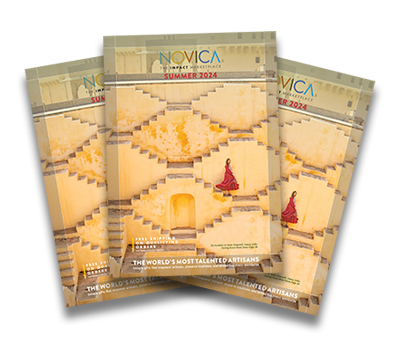

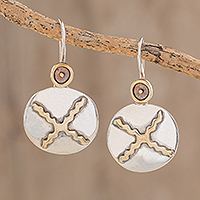
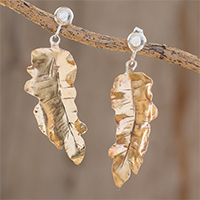 Bestseller
Bestseller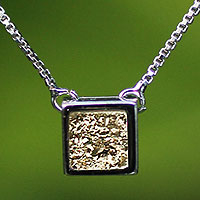
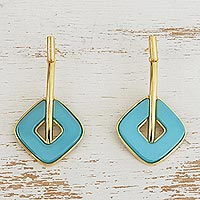
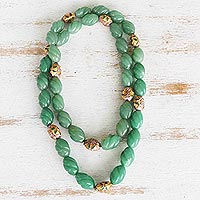
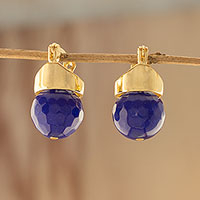
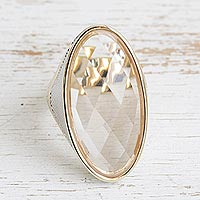

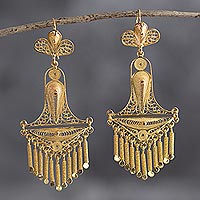 Bestseller
Bestseller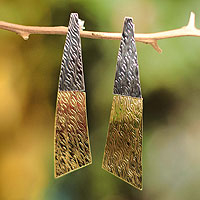
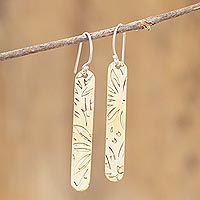
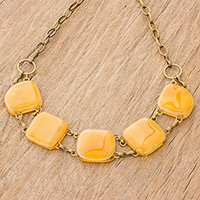
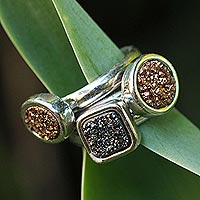
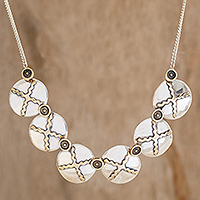
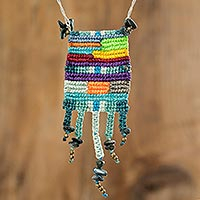
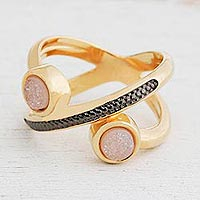
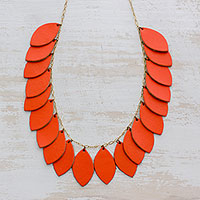
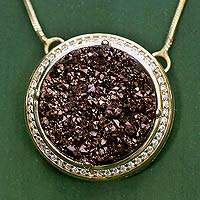
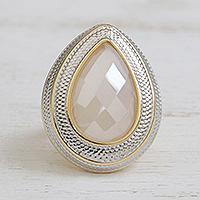 Bestseller
Bestseller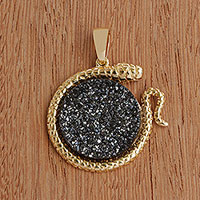
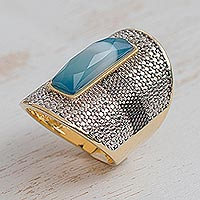 Bestseller
Bestseller